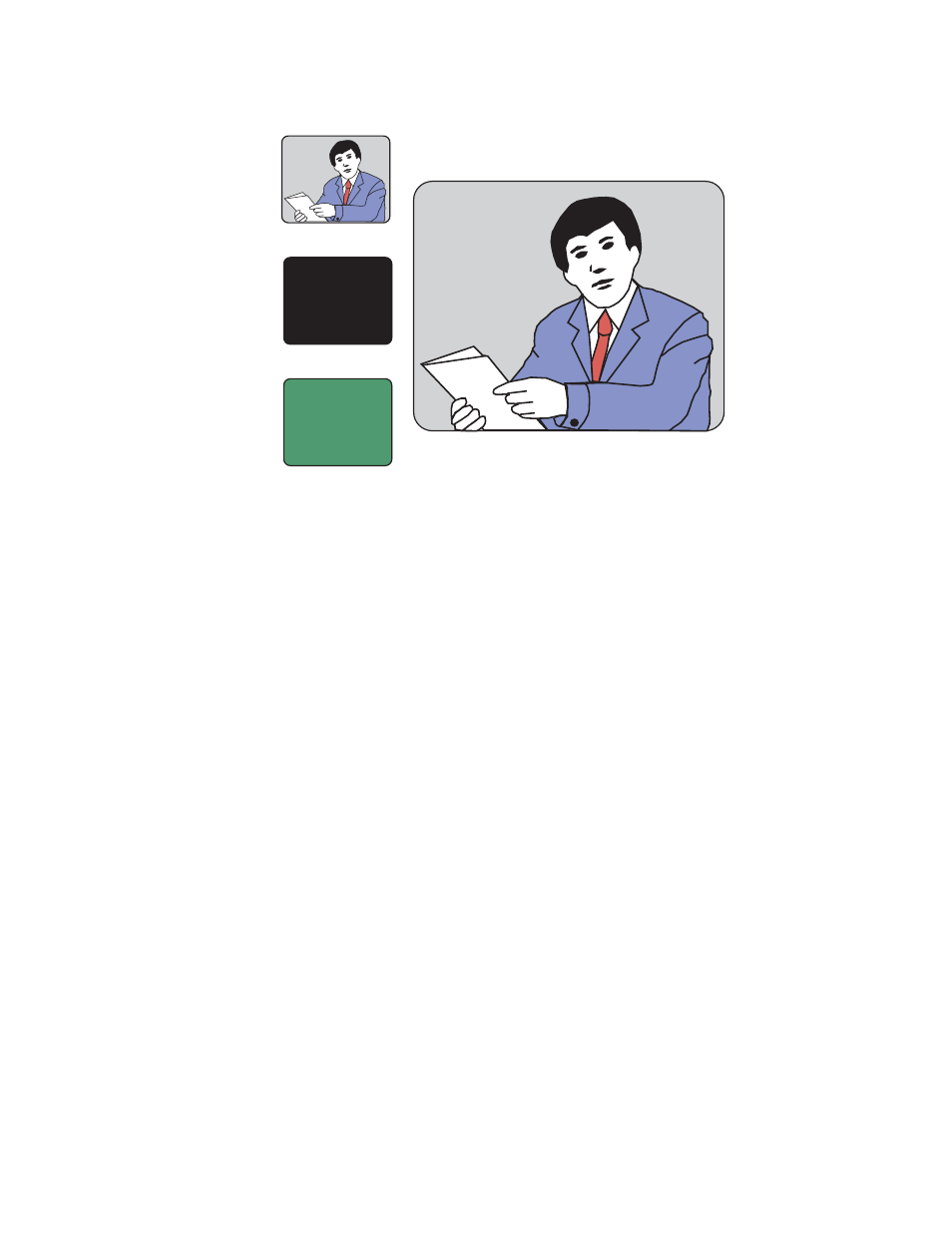Shaping video, Logo – Grass Valley Kayenne XL Package v.7.0.4 User Manual
Page 44

42
Kayenne XL Package — User Manual
Section 2 — Concepts
Figure 7. Matte Fill Luminance Keying Example
In this keying discussion illustrations rather than actual screen images are
used for simplicity, and because the printing process has difficulty cap-
turing the subtleties of soft key edges.
Shaping Video
In the matte key example above, the key fill signal was a full raster color
that did not match the shape of the key cut signal. This key fill signal is
accurately called non-shaped video, but may also be referred to as unshaped
video since both signal types are processed identically during keying.
Some external devices (for example, character generators) provide a key
cut signal and an already processed companion key fill signal. A key fill
signal that correctly matches the key cut signal is called shaped video.
During keying, properly shaped key fill video can be summed with a back-
ground signal (with a hole cut) and achieve the desired result.
The appropriate key mode for this type of signal is the additive key.
If a key fill does not match the hole in the background (like in the matte key
example above), the key fill needs to be shaped by the switcher. By multi-
plying the key fill signal with the key control signal the unwanted areas of
the fill can be made black, shaping the video to match the hole before it is
summed with the background. Key fill video must be shaped using the key
cut signal actually used to create the hole in the background. Video shaped
with a different key cut signal will not key correctly.
The appropriate key mode for this type of signal is the Linear key or Lumi-
nance Key.
Key Cut
Key Fill
Background
Background with Matte Key Inserted
0618_00_32_r1
LOGO
LOGO
LOGO
LOGO
